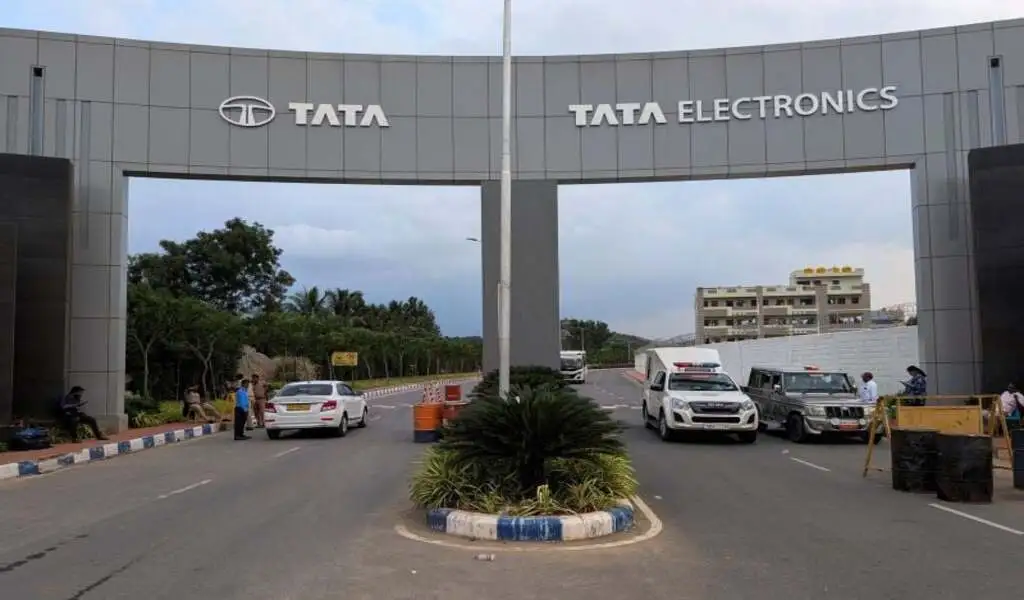(VOR News) – The manufacture of Apple iPhone components at a plant in southern India that is controlled by the Tata Group may be halted due to substantial damage caused by a fire, according to a source and an industry analyst.
This might occur before the holiday season, when sales are expected to increase. Under these circumstances, the American company’s suppliers would be compelled to make arrangements for the transportation of essential components from China or another location.
Both Foxconn, the nation’s contract manufacturer, and its own iPhone assembly, which takes place at another site, rely on the Tata factory in Hosur, Tamil Nadu, for the production of iPhone back panels and other components.
Due to the fire that broke out over the weekend, production at the facility has been placed on pause for an indeterminate period of time currently.
According to Counterpoint Research, which is based in Hong Kong, the company anticipates that 1.5 million iPhone 14 and 15 models would be sold locally during the Indian festival season, which begins at the end of October and continues until the beginning of November.
The fire leaves Apple unable to meet fifteen percent of market demand.
It is anticipated that the impact on India’s production of earlier iterations of the iPhone will range between ten and fifteen percent.
The co-founder of Counterpoint, a business that has been monitoring Apple’s shipments overseas for years, Neil Shah, hypothesizes that Apple could be able to mitigate the effects of this conclusion by increasing the amount of electronic components it imports and shifting a greater proportion of its export inventory to India.
According to data that is available to the public from customs, Tata, which is one of the most prominent firms in India, supplied iPhones to China, the Netherlands, and the United States for a total value of more than $250 million during the year that ended on August 31. Moreover, this was in addition to the sales of iPhones in India.
According to Counterpoint, Apple suppliers typically maintain a stock of rear panels for a period of time ranging from three to four weeks.
According to an industry insider who has extensive knowledge of the matter, Apple would most likely hold its shares for a period of eight weeks, which would delay any potential immediate effects caused by the scenario.
According to their assertions, the American corporation may create a second assembly line in China or prolong its shifts there in order to supply components to the Indian iPhone manufacturers in the event that the production slowdown continues.
The efforts of Prime Minister Narendra Modi to persuade foreign investors to “Make in India,” particularly in the electronics industry, have been impeded by widespread delays in the supply chain.
Despite Apple’s efforts to extend its business outside of China, two of Apple’s suppliers, Foxlink and Pegatron, were compelled to temporarily suspend their activity in India due to separate fire events that occurred in the previous year.
These Apple fires happened in India. Following an investigation.
The authorities found that a significant amount of fire safety equipment at Foxlink’s location was not functioning properly. Both Wistron and Foxconn, two contractors, have experienced analogous repercussions as a result of labour unrest in recent times.
The vice president of Cybermedia Research, Prabhu Ram, has stated that “these are temporary setbacks.” “Continued efforts to improve safety and operational standards are crucial for strengthening India’s position as an emerging global electronics manufacturing hub.”
Despite the fact that Tata is one of Apple’s most recent Indian suppliers, analysts anticipate that India will supply twenty to twenty-five percent of all iPhones that are shipped around the world this year.
This represents an increase when compared to the 12–14% that was reported the previous year by the department.
The plant that caught fire was responsible for the employment of twenty thousand individuals in total. There is a lack of clarity over whether or not the incident will result in a delay in the manufacture of finished iPhones, which was supposed to start later this year at a separate facility located within the same Tata plant.
SOURCE: TET
SEE ALSO:
Sources Indicate ByteDance Intends to Build New AI Models on Huawei Chips.
Spotify Not Working? Users Reported Access Problems.








